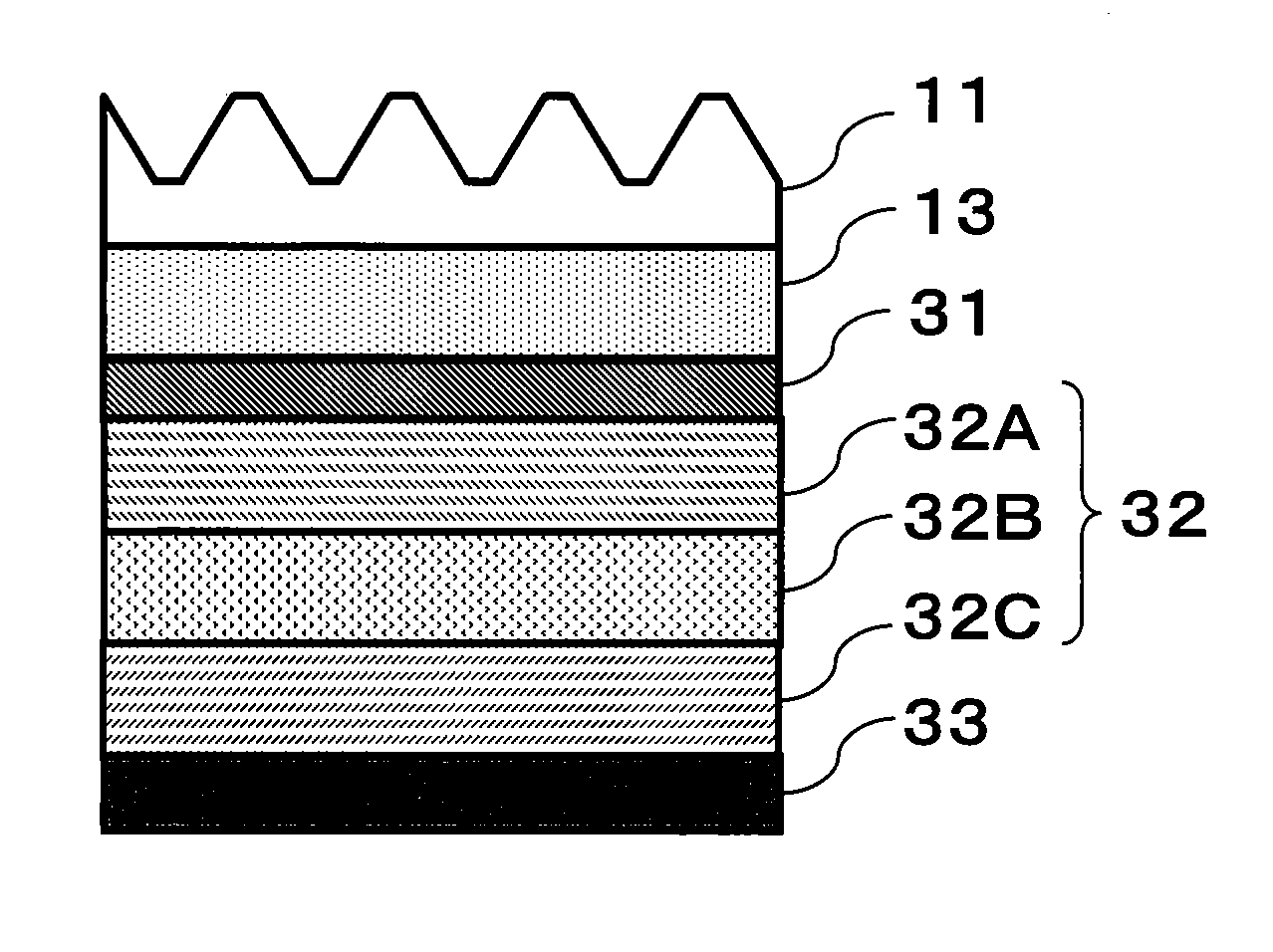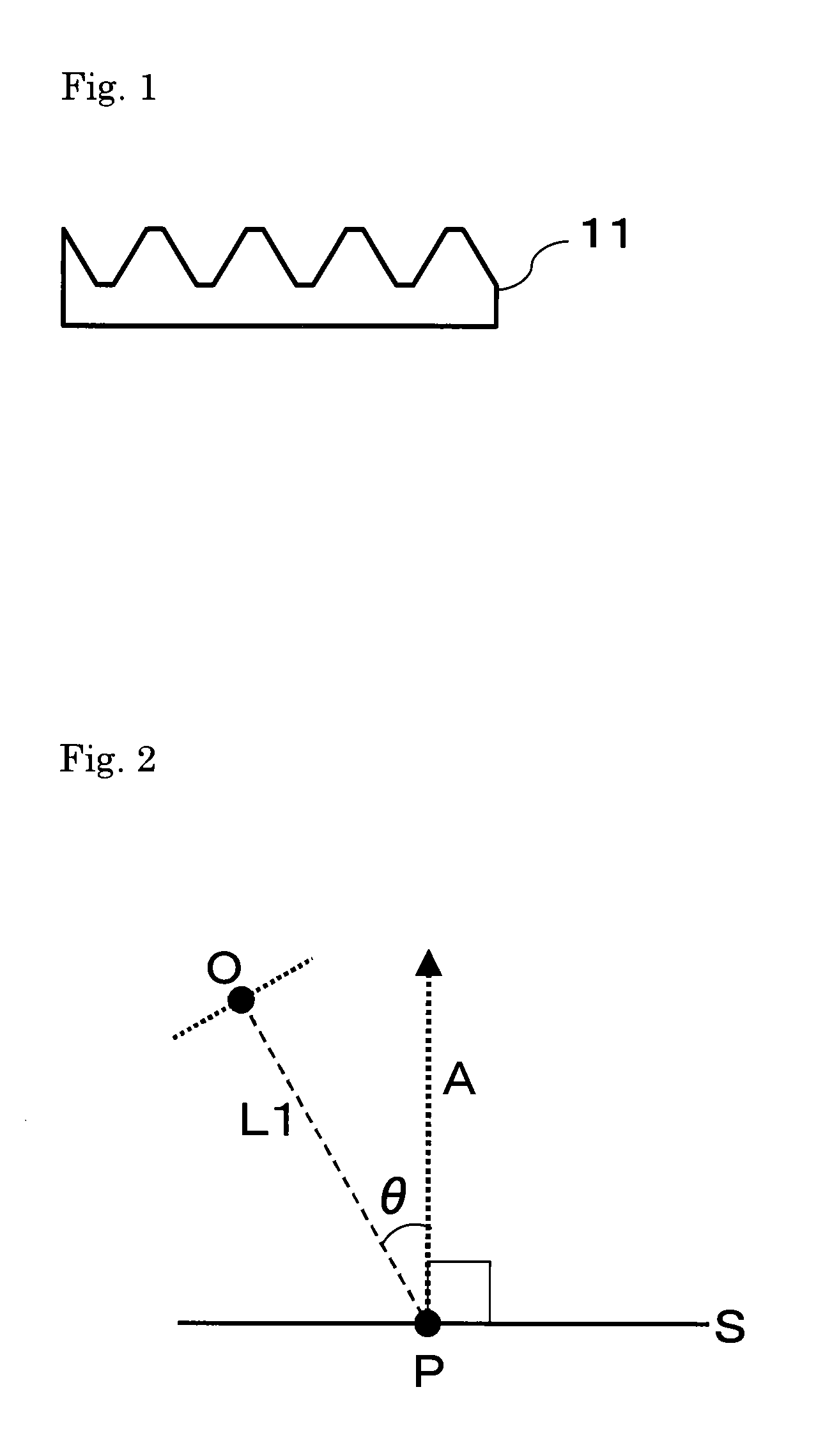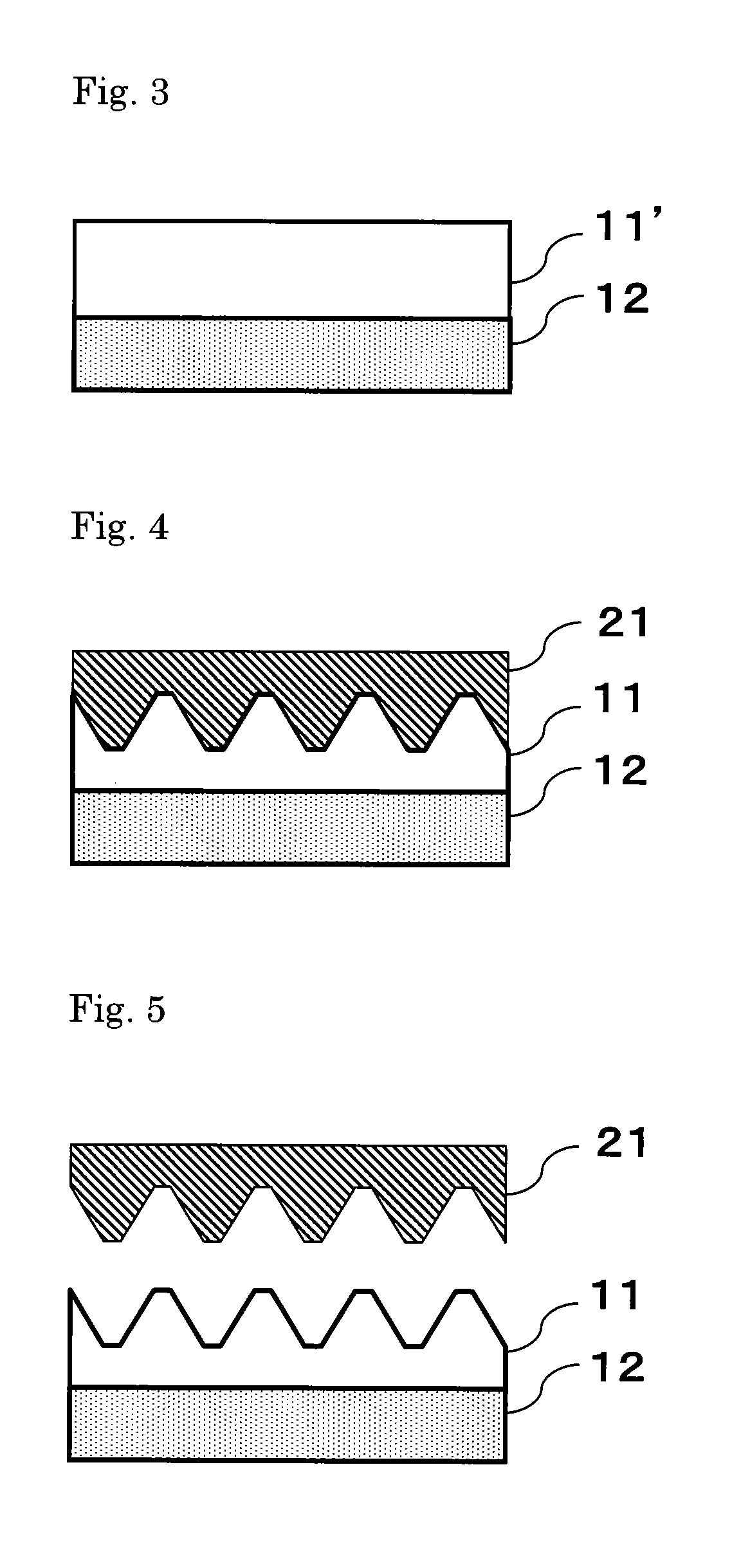Microlens for organic el element, organic el element using the same, and manufacturing methods thereof
a technology microlens, which is applied in the direction of lenses, lighting and heating apparatus, instruments, etc., can solve the problems that the conventional microlens of organic el elements described in documents 1 and 2 are not necessarily satisfactory, and achieve the effects of reducing the angle-dependent emitted light, reducing the change of chromaticity, and high light extraction efficiency
- Summary
- Abstract
- Description
- Claims
- Application Information
AI Technical Summary
Benefits of technology
Problems solved by technology
Method used
Image
Examples
example 1
Step of Forming Master Block
[0100]First, a silicone-based polymer (a mixed resin composition containing 90% by mass of a silicone rubber [manufactured by Wacker Chemie AG under the product name of “Elastosil RT601A”] and 10% by mass of a curing agent [manufactured by Wacker Chemie AG under the product name of “Elastosil RT601B”]) was applied onto a base member (material: glass, thickness: 1.1 mm, size: 17×13 mm) by a spin coating method so as to achieve a thickness after the application of 22.5 μm. Then, the silicone-based polymer was cured by being heated at 100° C. for one hour. Thus, a first silicone-based polymer film was formed.
[0101]Next, the base member on which the first silicone-based polymer film is formed was placed in a vacuum chamber, and a first aluminum vapor-deposition film (thickness: 100 nm) was formed on the first silicone-based polymer film by a vapor deposition method under conditions of a temperature of 80° C. and a pressure of 1×10−3 Pa. Thus, a first stacked ...
PUM
| Property | Measurement | Unit |
|---|---|---|
| Temperature | aaaaa | aaaaa |
| Length | aaaaa | aaaaa |
| Angle | aaaaa | aaaaa |
Abstract
Description
Claims
Application Information
 Login to View More
Login to View More - R&D
- Intellectual Property
- Life Sciences
- Materials
- Tech Scout
- Unparalleled Data Quality
- Higher Quality Content
- 60% Fewer Hallucinations
Browse by: Latest US Patents, China's latest patents, Technical Efficacy Thesaurus, Application Domain, Technology Topic, Popular Technical Reports.
© 2025 PatSnap. All rights reserved.Legal|Privacy policy|Modern Slavery Act Transparency Statement|Sitemap|About US| Contact US: help@patsnap.com



